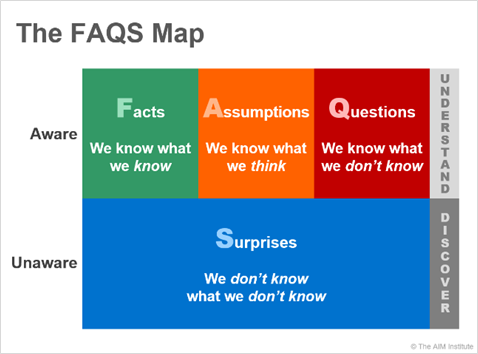- BLUE HELP
- Blueprinting Center & Methodology
- How does Blueprinting fit with Minesweeper de-risking?
-
Blueprinting Center & Methodology
- What is New Product Blueprinting?
- How is Blueprinting learned and applied?
- Blueprinting Center
- Blueprinting E-Learning Course
- How can I become Certified in New Product Blueprinting?
- How does Blueprinting fit with a stage-and-gate process?
- How does Blueprinting fit with strategic planning?
- How does Blueprinting fit with Design Thinking?
- How does Blueprinting fit with Lean Startup?
- How does Blueprinting fit with Minesweeper de-risking?
- How does Blueprinting fit with LaunchStar product launch?
- What innovation metrics should we use?
- What is "Jobs-to-be-Done?"
-
Blueprinter® Software
-
Market Segmentation (Step 1)
-
Discovery Interviews (Step 2)
- How to plan Discovery interviews
- Preparing your interview team
- Convincing customers to be interviewed
- How to handle confidential info in an interview
- How to conduct a Discovery interview
- Finding & using a digital projector for interviews
- How to conduct a customer tour
- How to debrief & follow-up a Discovery interview
- Engaging your sales colleagues in interviews
- Engaging distributors in interviews
- Interviewing customers down the value chain
- How to interview remotely with web-conferences
- How to interview at trade shows & other venues
- Interviewing in different global cultures & languages
- How to listen well during customer interviews
- How to probe during customer interviews
- How to gather economic data during interviews
- How to create & use Current State questions
- How to identify Must Haves (MH)
- How to select Top Picks (TP)
- How to use Trigger Maps
- How to form Outcome Statements
-
Preference Interviews (Step 3)
-
Rest of Blueprinting (Steps 4-7)
-
Everyday VOC
-
Minesweeper® De-risking
3. Locate landmines early and cheaply
"Landmines" are undetected assumptions that can "blow up" project schedules, budgets and success.
When you look at your past “high-stakes” projects that failed, can you identify any landmines… something that blew up budgets, schedules or reputations? Were they detectable before they blew up? And what would have happened if the project team had spotted them earlier?
When asked these questions, most teams agree on the landmines that killed their project… and that they could have done a better job spotting them earlier. While post-mortems are fine, you’ll do better with a pre-mortem. That is, consider what landmines might kill your project… and then defuse them if you can.
Consider what you do and do not know as you begin your project. You have some…
- Facts: You know what you know
- Assumptions: You know what you think
- Questions: You know what you don’t know
- Surprises: You don’t know what you don’t know

Your team needs a methodology for organizing all the information… so it can drive from uncertainty to certainty on those assumptions that could kill your project. This is precisely what AIM’s Minesweeper de-risking was designed to do (next article). You can think of this as conducting a pre-mortem—instead of a post-mortem—to understand where your potential project-killers are.
For more, download the AIM white paper, Innovating in Unfamiliar Markets, and view the Minesweeper Project De-risking video.
Keywords: Landmine, assumption, FAQS, facts, assumptions, questions, surprises, pre-mortem, de-risking, high-stakes
